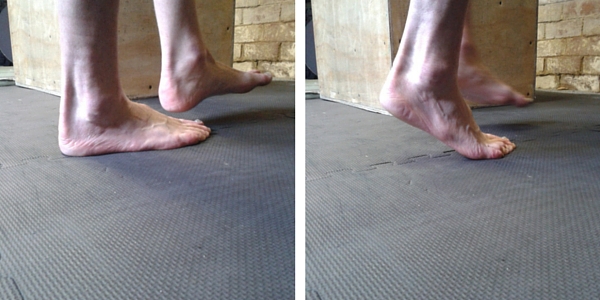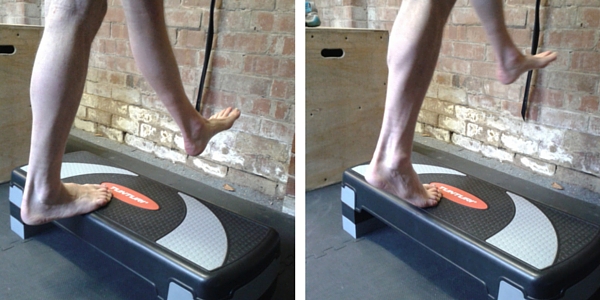Professor Jill Cook is a physiotherapist, a clinician and a scientist, she is deputy editor of the British Journal of Sports Medicine and is, quite frankly, a legend. This is my take, and a simplification for the time starved on the British Medical Journal podcasts delivered by Jill Cook – you can listen to the originals by following these links part 1 and part 2.
Lets break it down from the beginning…
What are tendons?
Connective tissue made from Collagen that attaches muscles (contracting tissue) to bones (levers). they don’t just connect, they store and release energy to provide efficient movement.
What is a tendinopathy?
The jury is still out on this one. We know it causes pain, but there are various theories as to why. The pain appears to occur because of an incorrect healing process in the tendon.
Why does it happen?
Because of an abnormal load being placed upon the tendon over a period of time. The abnormal load exceeds the tendons capacity to work as an energy storage and release mechanism.
These abnormal loads come about from: too much weight, too much distance, too much force going through the tendon complex and anything that exceeds the tendons capacity for work.
What can we do about it?
If a tendinopathy has just happened, it will be painful, reactive to any load that is placed upon it, and generally unhappy. This is perhaps the only time that REST is indicated. Allow the tendon to stop being reactive and reduce the tenderness and pain.
After you have rested it, the reloading/rehabilitation process begins:
Stage 1 – Isometric loading – can be used at this point. (This is putting force through the muscle and tendon while it does not move). This seems to help reduce pain levels and should have a dramatic and immediate effect.
Once the original pain has gone away, continue with Isometric exercises.
From this stage, complete rest is not actually a good idea.
Why?
Tendons respond to load, as do all tissues within the body. If we reduce the load then the end result will be tissues with a reduced capacity for work. Complete rest will mean that the tendon will get used to not being used, and other injuries may become more likely. It needs to be loaded in order to regain strength.
There may well be some residual pain at this stage, and one of the more important things is to ensure there is no plyometric loading of the tendon. Plyometric loading – energy storage and release (bouncing) places most strain on tendon capacity and is the final stage of rehab.
Stage 2 – Concentric loading (pushing/pulling) and eccentric loading (braking).
Here we are looking at increasing the strength of the muscle which the tendon is attached to. The strength of the muscle seems to correlate with the injury potential of the tendon.
The stronger the muscle, the less likely it is to have a tendinopathy.

Heel raise from flat – good for achilles tendinitis in the reactive stage
To improve the capacity of the muscle and tendon complex, we need to use a high load with relatively low repetitions. The maximum amount of repetitions we’re looking for is 15 at a time. To begin with, it may well be that a maximum of 7 at bodyweight can be done before pain or weakness prevent you from carrying on.
This is not a problem. Practice with the highest weight you can until you reach 15.
If you are able to do more than 15 heel raises (leg extensions/whatever it is that stresses the musculotendinous complex), increase the weight so that you cannot, and start again from a lower number.
The aim is to do ever increasing workloads through the tendon in terms of weight, rather than in terms of endurance.

Heel raise from a heel dip – not something to do at the beginning of the rehab process, but something to work up to.
Stage 3
Start with energy storage – in the case of achilles tendons – jump/hold, followed by drop holds. Eccentric to a holding pattern from various heights and with varying speeds and loads.
Once this is comfortable, and does not cause problems, increase the tissue capacity by introducing load and release – first with both legs at a low level, building up to a high level before introducing single leg loads.
Note – it is far easier to re-injure if working with a single leg that does not yet have capacity. Overload on double legs first before you consider overloading on single.
Stage 4 – return to sport
Throughout all of this, there should be some kind of aerobic exercise going on as well, something that does not affect the tendon in a storage/release mechanism. There are a myriad machines which enable this.
However, as with any rehab – it is important to keep the athlete not only inspired, but emotionally attached to their goals. They may not like the fact that they are away from the sport they love, but if you can set goals for them to achieve while doing something else, it may help keep them motivated while injured.
The return to sport needs to be graduated.
Again, we are looking at a slow increase in capacity. This is not only about increasing weights and endurance, but also about increasing speed. More speed puts more force through tendons, and so demands greater capacity. If the muscle is not strong enough, and the tendon does not have enough capacity, the whole unit will fail again, and you will be very much back to square one.
Not a good thing.
This graduated return to sport cannot be emphasised enough. Just because the athlete thinks they are back to full strength, does not mean that the tendon is. It is most likely still healing. Better to be more on the cautious side and get back to full strength in a couple more weeks than go out all guns blazing and set yourself back to the very beginning again.




